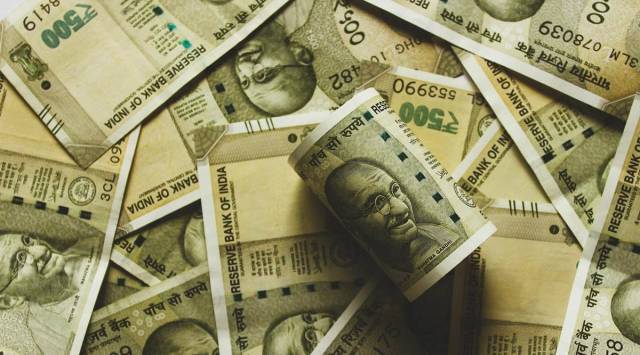In early trading on Monday, May 8, 2023, the Indian rupee strengthened against the US dollar, gaining 8 paise to trade at 81.70. The American dollar’s decline in the international market, considerable inflows of foreign funds, and the low price of crude oil per barrel are all factors that have benefited the rupee.
Forex dealers observed that the rupee started strongly versus the dollar at 81.76 before rising to 81.70, representing an increase of 8 paise from its previous closing. The rupee had reached a closing price of 81.78 versus the US dollar on Thursday, and the FX market was closed on Friday in observance of Buddha Purnima.
The dollar index, which measures the US dollar’s strength against a basket of six different currencies, decreased by 0.07% to 101.14 in addition to the rupee’s gains. The global oil benchmark, Brent crude futures, increased by 0.07% to USD 75.35 a barrel in the meantime.
The rupee is probably going to stay range-bound, according to Anil Kumar Bhansali, Head of Treasury at Finrex Treasury Advisors LLP, because the Reserve Bank of India (RBI) has interfered on both sides. The RBI has been purchasing dollars and gold off the market, as seen by the increase in foreign exchange reserves to USD 589 billion. The market is also anticipating data on US consumer inflation expectations and Eurozone industrial production.
The RBI said on Friday that India’s foreign exchange reserves increased by USD 4.532 billion to USD 588.78 billion for the week ending April 28. Compared to the previous week, when they had decreased by USD 2.164 billion to USD 584.248 billion, overall reserves had increased noticeably.
According to exchange data, foreign institutional investors (FIIs) were net purchasers on Friday in the capital market, buying shares worth 777.68 crores. The 30-share BSE Sensex increased by 447.03 points, or 0.73%, to 61,501.32 on the domestic equities market, while the larger NSE Nifty increased by 120.65 points, or 0.67%, to 18,189.65.
There are many reasons behind the trend of increased foreign exchange reserves. First off, foreign capital in the form of foreign direct investments (FDIs) and foreign portfolio investments (FPIs) has been steadily pouring into the Indian economy.
Due to its sizable domestic market, demographic dividend, and numerous government attempts to encourage foreign investments, the Indian economy is seen as an alluring investment location.

Second, to strengthen its foreign exchange reserves, the RBI has been actively purchasing dollars and gold from the market. This is necessary for the RBI to keep its foreign exchange reserves at a sufficient level to pay for import bills, external debt, and other international obligations.
In conclusion, the Indian economy will benefit from the rupee’s 8 paise increase versus the US dollar to 81.70 in early trade on Monday, May 8, 2023. The increases are attributable to substantial inflows of foreign funds, crude oil prices below USD 75 per barrel, and the depreciation of the US dollar abroad. Together, these elements have supported the neighborhood unit.
Other indications of a robust economy include the upward trend in the Indian stock market, foreign investments, and the rise in the country’s foreign exchange reserves. Positive effects on the value and stability of the rupee may result from these developments.

